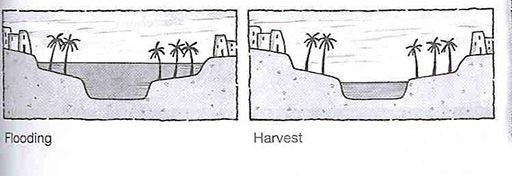Resource 1: Natural resources and human settlement
![]() Teacher resource for planning or adapting to use with pupils
Teacher resource for planning or adapting to use with pupils
From ancient times to the present, human settlement patterns have been influenced by the availability of usable natural resources. Food, water and shelter are basic human needs, and have thus determined the ability of a society to flourish or fail in its existing environment. The ancient Egyptians developed in river valleys, which ensured access to food and drinking water, and also provided transportation routes for trade. However, the protection and wise use of these resources ultimately determined a population’s ability to thrive and sustain life for future generations.
Egypt is the oldest of all African kingdoms. It had a big influence on the cultures of Europe, Asia and Africa. But why did the ancient Egyptians settle where they did?
Almost 84% of Egypt is desert. The other 16% of land is next to the NileRiver and this where most Egyptians lived. Farmers did not have to worry about overusing the land because each year the NileRiver flooded the farming land and made it fertile again. It was so fertile that farmers harvested two to three crops a year.

Ghana
What about Ghana? How does the physical geography of Ghana differ to that of Egypt? What are the natural resources in Ghana that have influenced the growth of cultures in Ghana? Consider this historically: who were the major groups in what we now call Ghana? What led them to settle and flourish where they did?
What about now? What resources does the modern state of Ghana have that influence its current pattern of settlement? Are they changing?
What about the locality of the school you are in? Encourage your pupils to think about why the town/village is there. How long has it been there? Why did it develop there? What resources does it currently have? Are they being managed well? Will it still be there in a hundred years time?
3. Thinking about resources and the environment



